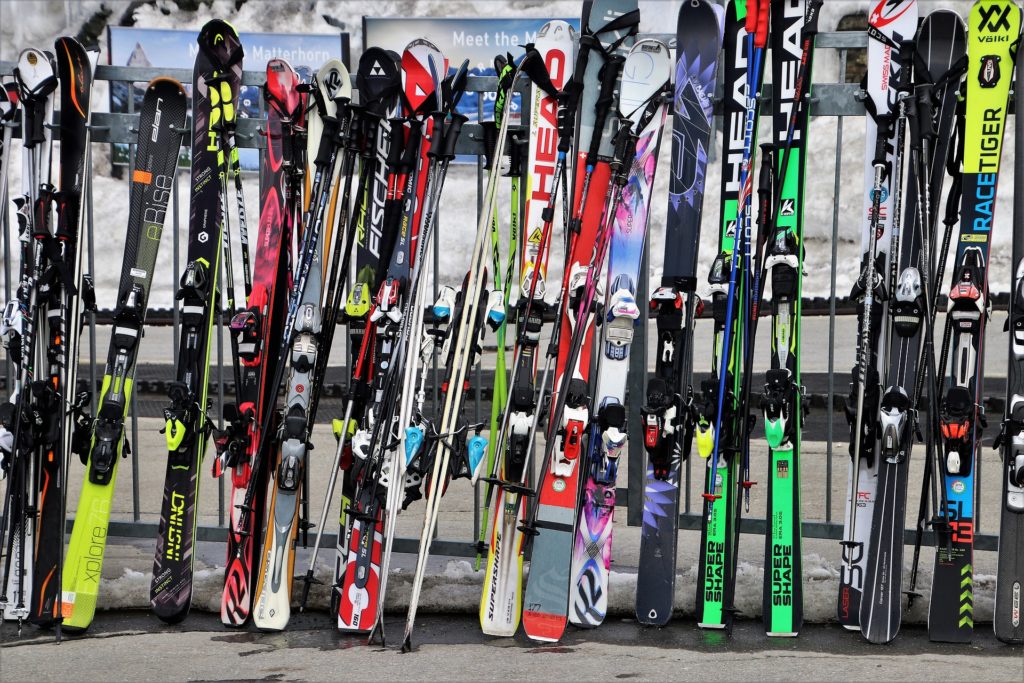If you own a pair of skis, you will want to take the best care of them possible. This might involve making sure your ski edges are sharpened, they are stored correctly and also, that they remain waxed.
It is therefore essential to know how often skis may need to be waxed and what the tell-tale signs are that you need to wax your skis.
If you find yourself asking any questions about ski wax, when to apply it and what to look out for, we have put together a complete guide to help you detect to right time to wax your skis!
You can tell if skis need to be waxed if they look discoloured and have a chalky white appearance, or if they have a dry texture and feel sluggish when skiing. Skis should be waxed at the start and end of every ski season, and it can be beneficial to wax them mid-season if you ski very frequently.
How to Tell if Skis Need to be Waxed: The Tell-Tale Signs
So, what exactly are the signs to look out for to know when to wax your skis?
- Discoloration
- Dry texture
- Slow or sluggish feel when skiing
Next, we will go into these signs in more detail so you know exactly what you’re looking for and how they come about.
Discoloration:
Discoloration on the base of skis is common when the layer on wax on then has diminished or has been removed. This is one of the clearest signs that your skis are in need of re-waxing.
This often can give a chalky white appearance on the base of skis. This chalky white appearance is most noticeable on black skis. For brightly coloured skis, this may simply appear as if the colour has been dulled and not as vibrant as it was when it was newly waxed.
Dry Texture:
Some skis may feel different to touch when they are newly waxed compared to when they are in need of re-waxing. This could feel slightly rough or dry compared to newly waxed skis.
When your skis are newly waxed, it is a good idea to take note of the colour and texture of the base of the skis so it is easily noticeable when either of these features change, signifying that they need to be waxed.
Slow/Sluggish Feel When Skiing:
Wax helps to increase how quickly your skis are able to travel across the snow. Therefore, when skis need to be re-waxed, they may feel slower than usual when skiing or even a little sluggish.
This may be quite difficult to notice so it is most easily detected alongside other features such as discoloration.
Why Do Skis Need to be Waxed?
Waxing skis protects the bases from drying out which can lead to delamination and damage to your skis. Waxing also lets you ski faster.
Keeping skis waxed not only keeps them in the best condition and helps to prevent certain kinds of damage. The first advantage to waxed skis is that it will prevent the bases from drying out and becoming damaged.
This layer of wax shields the base material from this and prevents delaminating, which can cause extensive damage to your skis.
Waxed skis also give better performance and are able to glide faster over the snow. This is often more important to advanced skiers, but a tell-tale sign that skis need to be waxed is a sluggish and slower feeling in your skis when on the slopes.

How Often Should Skis Be Waxed?
Skis should ideally be waxed at the start and end of every ski season. Waxing mid-season may also be required a few times per month, especially if skiing every day. Skis should be waxed when the pervious layer of wax has been partially worn away.
For all skis regardless of how often you ski during the season, skis will need to be waxed at least at some points. But in general, how often your skis will need wax will depend on how often you ski and for how long.
For example, all skis need to ideally be waxed at the start and end of the ski season.
Other than these standard times when waxing should ideally take place, how often you are advised to wax mid-season can range from a few times a month to even more regularly if skiing every day. This is because the more you ski, the quicker the existing wax will diminish on the base of your skis and need to be replaced.
The easiest way to determine how often your individual skis should be waxed mid-season is to know what to look out for.
If you know the tell-tale signs that your skis need to be waxed, you will get to know just how frequently you should be expecting to do so depending on how often you ski, your skiing style and your specific pair of skis.
What Time of the Season Should You Wax Your Skis?
Waxing skis at the end of the ski season is extremely important. This helps to protect them from drying out while being stored out of season. Waxing skis at the start and during the season is also important to get the best performance out of them possible and protecting them from damage.
Many people think that it is only important to wax skis at the very start of the season when you are about to start skiing. However, lots of people forget the importance of also waxing skis at the end of the season. This will help to maintain the good condition of your skis when they are being stored out of season.
When waxing at the end of the season, it is also advised not to remove the excess wax by scraping it off until the start of the following season.
Many skiers wax their skis at the beginning and during the ski season to ensure they are getting the best performance from their skis possible. However, how often this is required is dependent on the type of skis and how often you are skiing.
Do New Skis Need to be Waxed?
Waxing new skis is good practice to keep them in the best condition possible. New skis are generally pre-treated with a thin layer of wax. However, it may have been a while since skis were waxed in the factory, so waxing new skis is advised, particularly for more advanced skiers.
Most new skis now come pre-waxed, although this can vary between brands and shops. Despite this, skis tend to dry out quickly and it is possible that the time between skis being waxed in the factory and you using them may be long enough to cause your ski bases to dry out substantially.
If you are new to skiing or a beginner skier, this layer of wax that the skis come pre-treated with will likely be enough to get the performance from your skis that you need. Beginner skiers will usually be skiing slower than advanced skiers, so don’t need skis to move quicker over the snow.
However, if you want to take the best care of your skis regardless of your ability, waxing brand new skis is the best idea to make sure they are protected from drying out and you get the best performance out of them possible.
Frequently Asked Questions
Why are there different types of wax?
Different types of wax are specifically geared towards certain conditions, snow temperatures and levels of performance. For example, older and warmer snow requires a different type of wax to colder and newer snow.
Many waxes have temperature ranges that they work best in. However, all-round waxes are also available. For the best performance, waxes specific to your ability and conditions provide optimal gliding.

